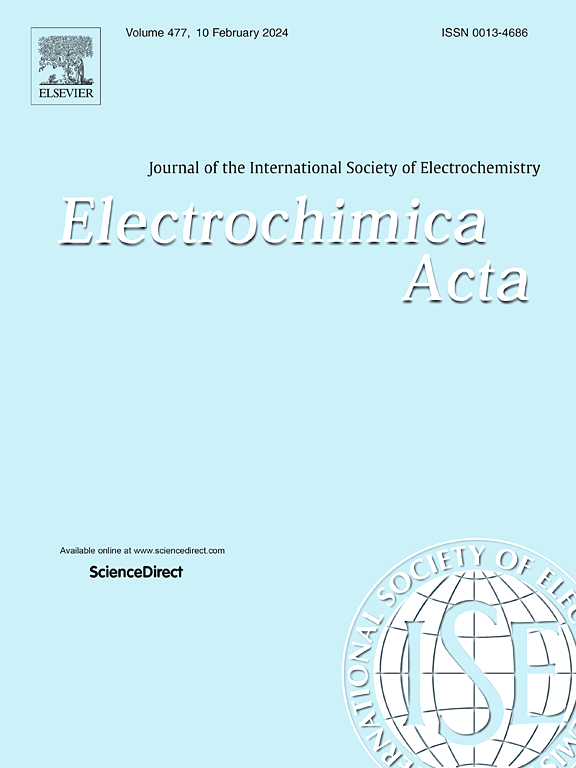无线极化下石墨烯同时功能化的一锅剥离
IF 5.5
3区 材料科学
Q1 ELECTROCHEMISTRY
引用次数: 0
摘要
二维材料领域发展迅猛,其独特性能的可调性进一步拓展了设备制造领域。共价官能化,如自发接枝和电接枝,已被用于提高分散性和优化各种应用的性能;然而,仍然存在一些挑战。目前的方法通常需要反应条件,这阻碍了对修饰均匀性的控制,或者依赖于导电材料,限制了可扩展性。本研究以石墨烯为例,介绍了一种利用无线极化对二维材料进行剥离和功能化的单锅协议。通过透射电子显微镜、原子力显微镜、X 射线光电子能谱(XPS)和拉曼光谱证实,该方法可在水中进行,无需使用表面活性剂或有毒溶剂,并能产生高质量的剥离石墨烯薄片。通过 XPS 和热重分析结合质谱法验证了重氮化学的功能化,展示了成功的接枝。这种可扩展的多功能无线方法有可能适用于各种二维材料和有机功能化方法,为工业集成提供了前景,并拓宽了设备应用的可能性。本文章由计算机程序翻译,如有差异,请以英文原文为准。
One-pot exfoliation with simultaneous functionalization of graphene via wireless polarization
The field of 2D materials has rapidly grown and has expanded further by the tunability of their unique properties for device fabrication. Covalent functionalization, such as spontaneous grafting and electrografting, has been employed to enhance dispersibility and optimize performance for various applications; however, several challenges still remain. Current methods often require reactive conditions that hinder control over modification uniformity or rely on conductive materials, limiting scalability. This work introduces a one-pot protocol for exfoliating and functionalizing 2D materials using wireless polarization, demonstrated with graphene. The method is conducted in water without using surfactants or toxic solvents and produces high-quality exfoliated graphene flakes, confirmed via transmission electron microscopy, atomic force microscopy, X-ray photoelectron spectroscopy (XPS), and Raman spectroscopy. Functionalization with diazonium chemistry is validated through XPS and thermogravimetric analysis combined with mass spectrometry, showcasing successful grafting. The scalable, versatile wireless approach has the potential to be applicable to a wide range of 2D materials and organic functionalization methods, offering the prospect for industrial integration and broadening possibilities in device applications.
求助全文
通过发布文献求助,成功后即可免费获取论文全文。
去求助
来源期刊

Electrochimica Acta
工程技术-电化学
CiteScore
11.30
自引率
6.10%
发文量
1634
审稿时长
41 days
期刊介绍:
Electrochimica Acta is an international journal. It is intended for the publication of both original work and reviews in the field of electrochemistry. Electrochemistry should be interpreted to mean any of the research fields covered by the Divisions of the International Society of Electrochemistry listed below, as well as emerging scientific domains covered by ISE New Topics Committee.
 求助内容:
求助内容: 应助结果提醒方式:
应助结果提醒方式:


